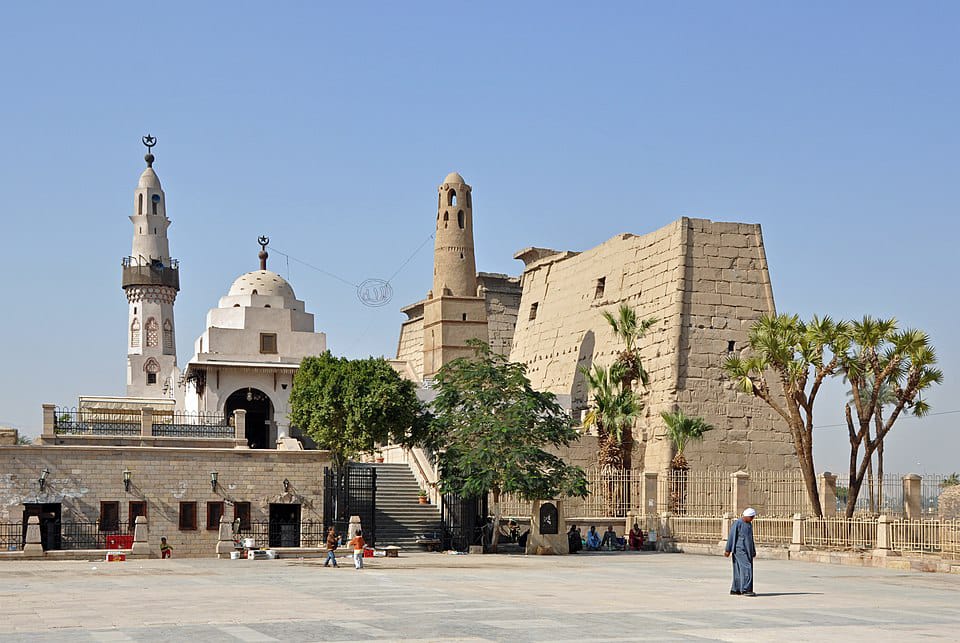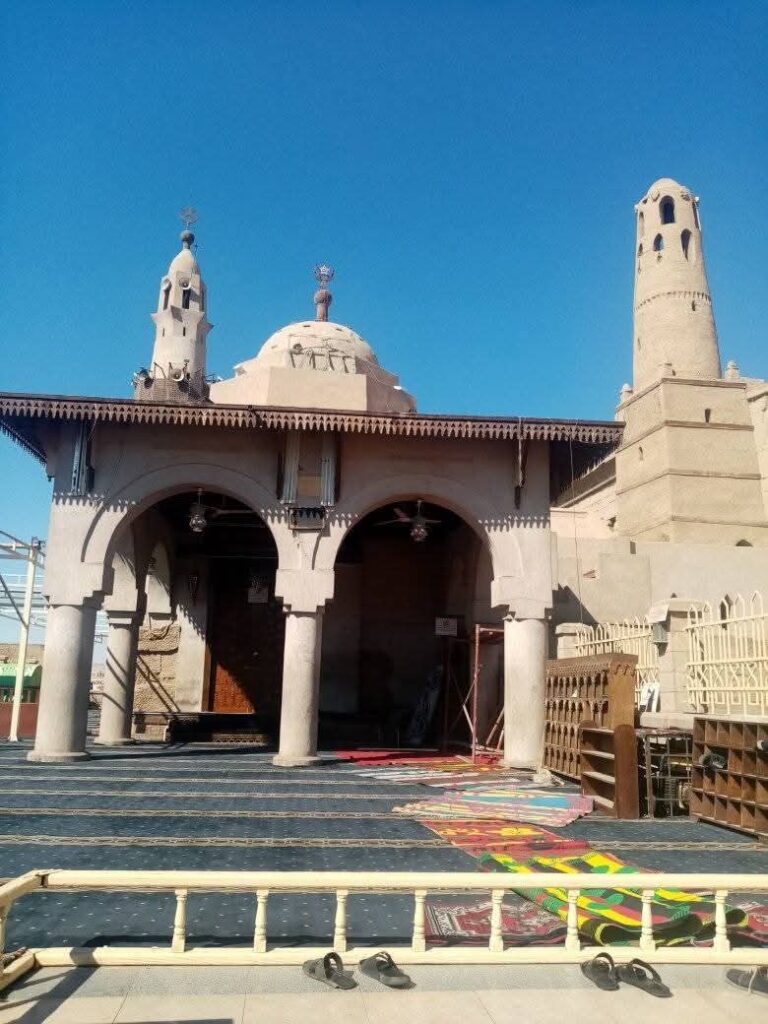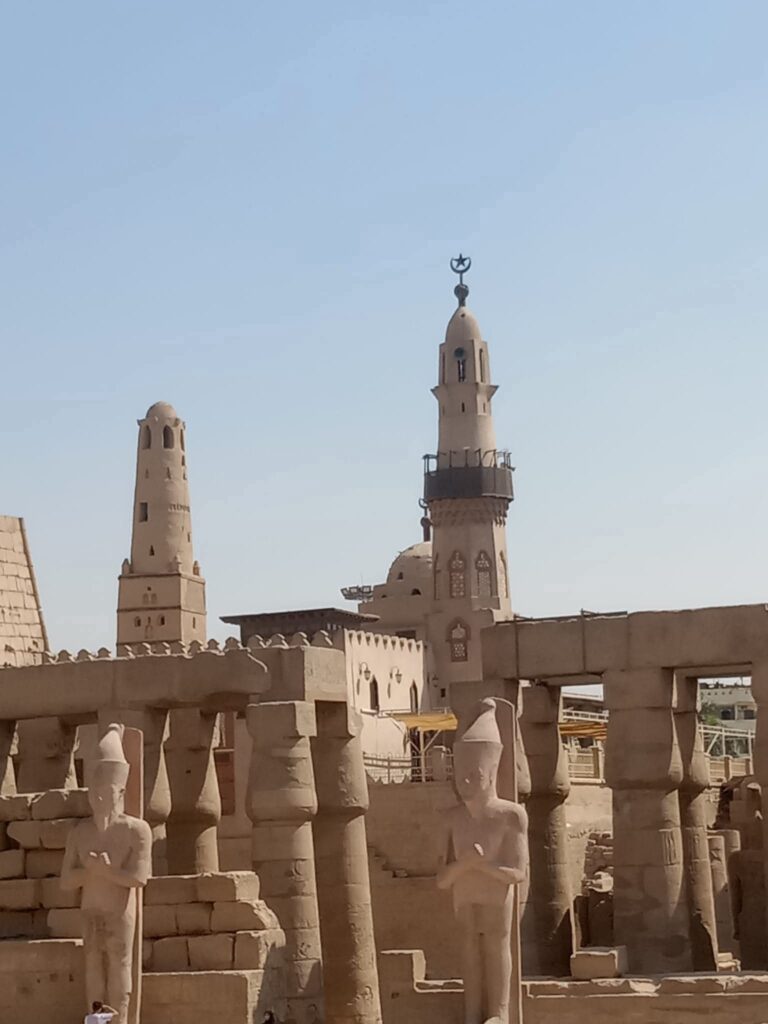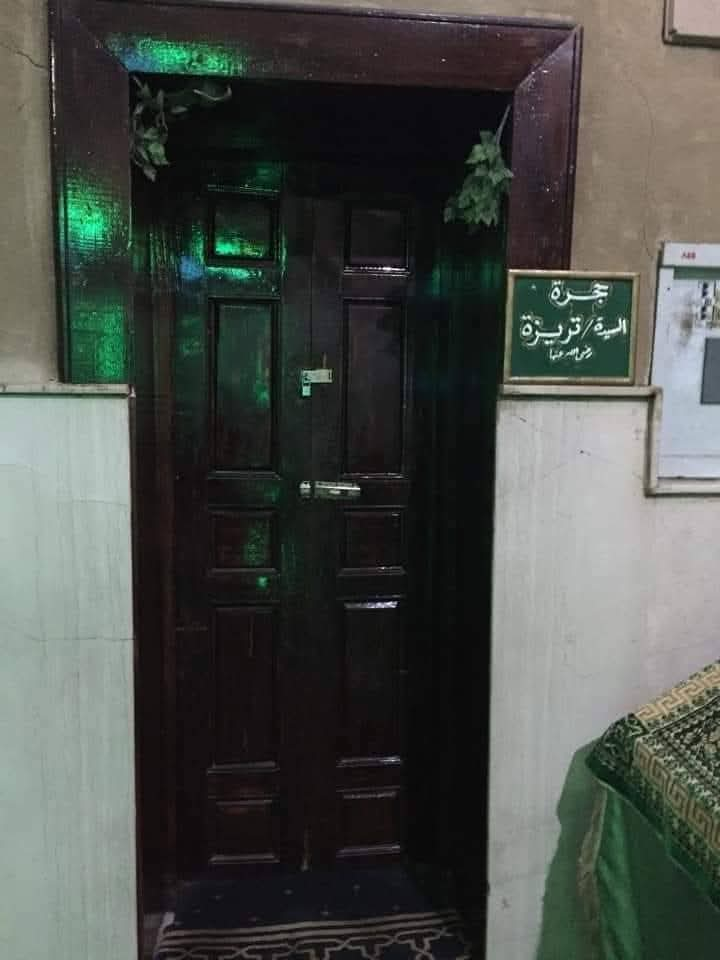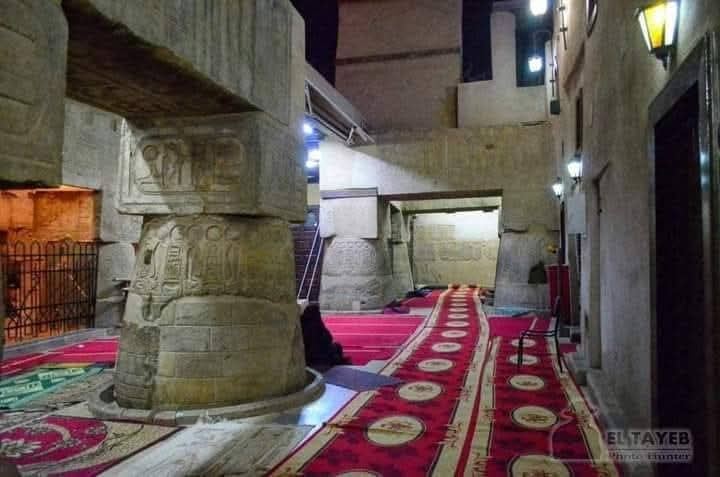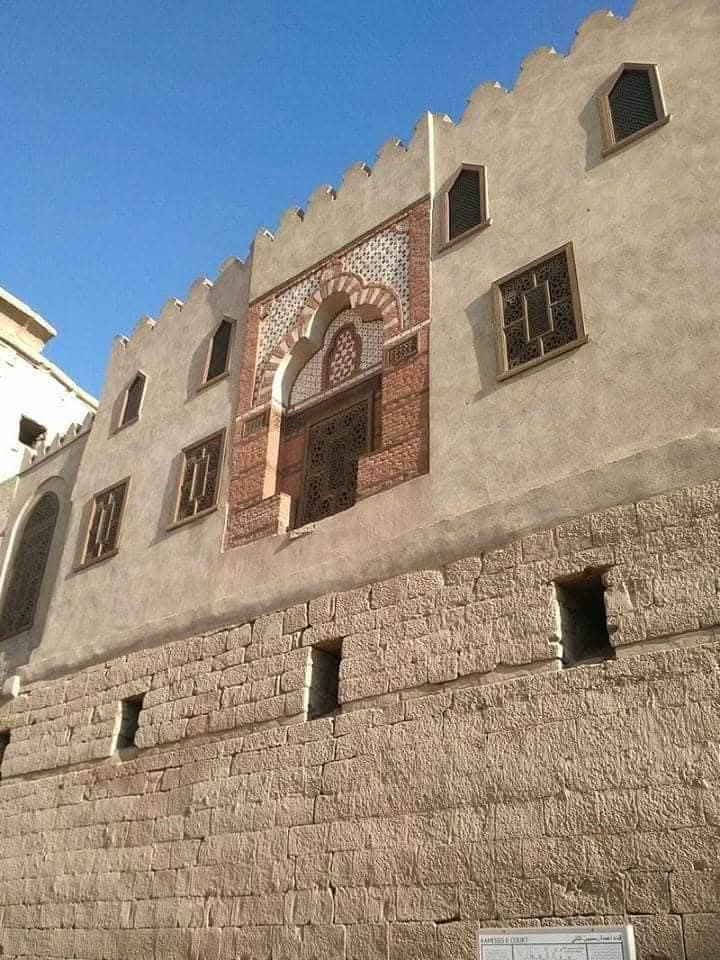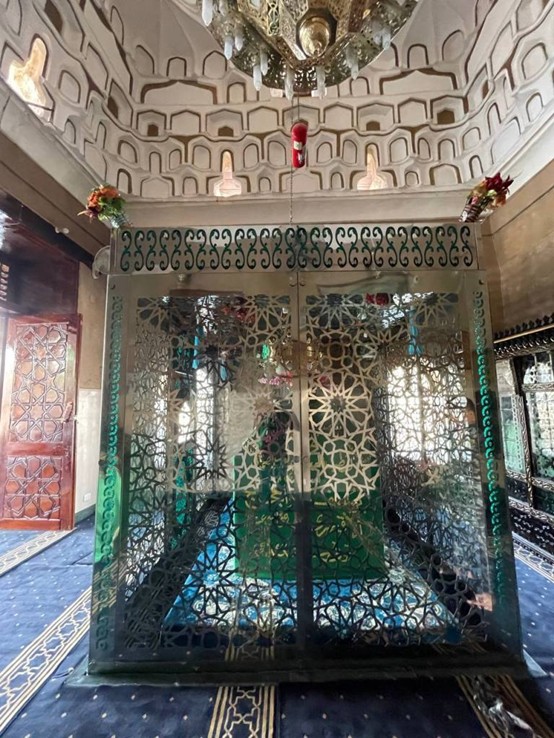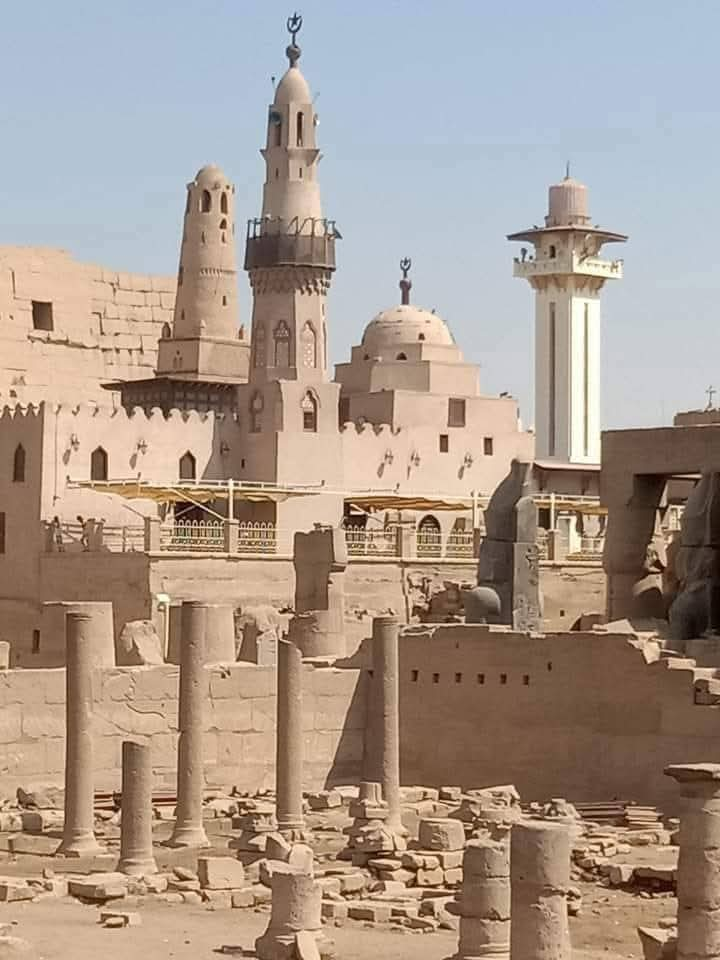Abu Haggag Mosque in Luxor – Islamic Faith Over Pharaonic Roots
In the heart of Luxor, on the eastern bank of the Nile, stands one of the most extraordinary monuments in the world — Abu Haggag Mosque. It is not merely a mosque, but a sacred archive of civilizations, where an Ancient Egyptian temple, a Christian church, and an Islamic shrine have existed — one on top of another — in the same holy ground for more than three thousand years.
From Pharaohs to Christianity: The Temple’s First Lives
The journey began in the 14th century BCE, when Pharaoh Amenhotep III built the Luxor Temple, later expanded by Ramses II, as a home for Amun-Ra and as the ceremonial heart of the great Opet Festival.
Centuries later, with the spread of Christianity across Egypt, parts of this majestic temple were converted into a church. Christian crosses and murals were painted over the ancient walls, turning the old sanctuary into a new house of worship.
Islam Arrives: Sheikh Abu Haggag and the Restoration of Faith
By the end of the Fatimid era (969–1171 CE), Egypt carried the weight of Shi’a doctrines, including practices that opposed Sunni orthodoxy. When the Ayyubids rose to power (1171–1250 CE) under Salah al-Din, they sought to restore the creed of Ahl al-Sunnah wa’l-Jamā‘ah, cleansing the land of remaining Fatimid theological errors.
It was in this context that Sheikh Abu Haggag, a scholar, reformer, and Sufi master, came to Luxor. His mission was twofold: to teach true Sunni Islam and to guide the people back to the purity of faith. Through his wisdom, charisma, and ascetic life, he became a beloved spiritual leader in Upper Egypt.
The Miraculous Acquisition of Sacred Ground
Local tradition preserves a remarkable story about how Sheikh Abu Haggag obtained the very spot where his mosque now stands.
He approached the Roman Christian governor (sometimes described as a powerful nun with authority in Luxor) and politely requested a small piece of land — just the size of a camel’s hide — to live and teach. Thinking it a harmless joke, she agreed.
With divine wisdom, Abu Haggag took the camel hide, cut it into a long, thin strip, and used it as a measuring rope, stretching it around a vast section of the old Luxor Temple grounds — including the very area that would become his shrine and mosque.
Bound by her own word, the governor honored the agreement. Thus, by intelligence, humility, and the grace of God, the ground that once served pharaohs and priests became a center of Islamic learning and devotion.
A Nun’s Journey to Islam
Among those touched by Sheikh Abu Haggag’s knowledge and spiritual clarity was the same Christian nun who had authority over the temple-turned-church. Amazed by his wisdom and the justice of Islam, she embraced the new faith. This conversion marked not only a personal transformation but also symbolized the spiritual shift of Luxor’s heart — from paganism, through Christianity, to Islam — all on the same sacred stones.
From Lodge to Mosque
Initially, the site functioned as a zāwiya — a small Sufi lodge for worship, study, and hospitality. Over time, it grew into a respected center of Islamic learning.
In the Mamluk period (1250–1516 CE), the mosque was rebuilt and expanded. A minaret rose above the ancient stones; new walls enclosed the shrine. What began as a humble corner of devotion became a prominent mosque — an Islamic sanctuary built above a Pharaoh’s temple, perfectly uniting layers of history.
A Place Where Three Faiths Meet
Abu Haggag Mosque remains a living testament to religious continuity:
Pharaonic foundations — the Luxor Temple, devoted to Amun-Ra.
Christian transformation — a Coptic church within its halls.
Islamic rebirth — a mosque, shrine, and school for Sunni and Sufi teaching.
Today, visitors can see hieroglyphic inscriptions, faint Christian symbols, and Islamic architectural details — all within the same sacred space.
The Annual Festival: Abu Haggag’s Mawlid
Every year, on the 14th of Sha‘bān, Luxor bursts with color, sound, and devotion in celebration of Abu Haggag’s Mawlid — his birth commemoration.
The festival features:
Joyful processions through the streets.
Sufi chants, dhikr, and prayers.
Traditional folk performances like tahtīb (stick dancing), horse dancing, mizmar music, and even symbolic camel processions.
Decorative boats and carts carrying craftsmen representing their trades, echoing ancient processions of the Opet Festival.
This annual event bridges Islamic devotion with echoes of Pharaonic ceremony, showing that Luxor’s spiritual heartbeat has remained alive for millennia.
A Living Chronicle of Egypt’s Spiritual Journey
Abu Haggag Mosque is more than a place of prayer. It is a living timeline, capturing how one sacred space has served gods, saints, and scholars across millennia.
Here, on the same stones where priests of Amun once walked, where Coptic hymns once echoed, and where Sufi invocations still rise, the continuity of human yearning for the Divine remains unbroken.
This is not only the story of a mosque above a temple — it is the story of Luxor itself, where history breathes, faith evolves, and time bows before the sacred.

